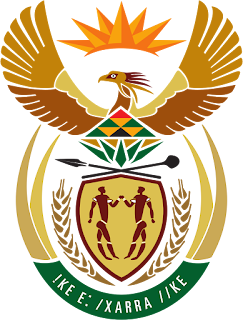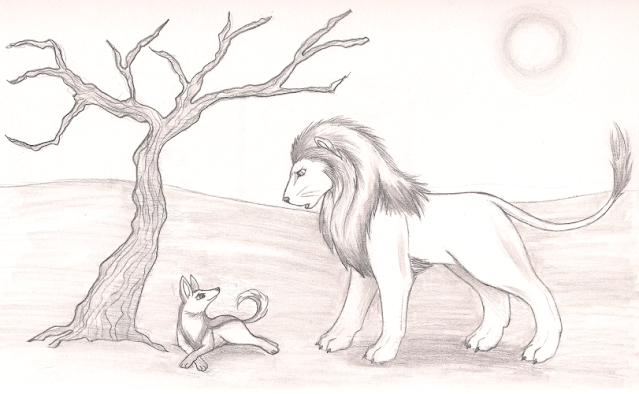The best places to visit in South Africa
South Africa
The jewel in the crown of Southern Africa, South Africa is one of the African continent's best safari destinations. One can drive right into the epic wilderness at Kruger or join khaki-clad rangers on guided drives and walks. Yet it is not all about large animal sightings – wildlife watching here also teaches one to enjoy the little things: a leopard tortoise ambling alongside the road or a bird chirping a distinctive chant in the trees
The jewel in the crown of Southern Africa, South Africa is one of the African continent's best safari destinations. One can drive right into the epic wilderness at Kruger or join khaki-clad rangers on guided drives and walks. Yet it is not all about large animal sightings – wildlife watching here also teaches one to enjoy the little things: a leopard tortoise ambling alongside the road or a bird chirping a distinctive chant in the trees
- Johannesburg
The capital of South Africa and sometimes referred to as the ‘City of Gold’ is the wealthiest and most populous province in Southern Africa because of the discovery of gold in the late 1880s there. It underwent a building of four times as a tented camp, a tin shanty town, four-storey Edwardian brick buildings and now, a city of modern skyscrapers which boast the tallest in Africa itself
- Museum Africa
One of South Africa’s most exquisite landmarks containing geological history as well as that related to the gold rush of Southern Africa. While the museum gives an in-depth history into that of the animals of prehistory, a celebrated figure here is Mohandas Karamchand ‘Mahatma’ Gandhi (1869-1948) the ‘father of India’ who is as known in South Africa as he is in his homeland India due to starting his career as an attorney in South Africa
- Gold Reef City
A gold-mining turned amusement park area
- Johannesburg Zoo
The only state-owned zoo in Southern Africa which in addition to housing endangered species such as the black rhinoceros has successfully bred Siberian tigers
- Sun City
The well-renowned casino and luxury resort where apart from playing for money and enjoying water parks is also known for getting up close to Lions and Southern African birds and experiencing the feeding of crocodiles
- Lesedi Cultural Village
An insight into the culture and lives of various Southern African tribes such as the Zulu and the Xhosa
- Krugerhuis Museum
A historical view of the residence of the South African President Paul Kruger (1825-1904)
- Transvaal Nature Museum
A look into the natural world of South Africa in both the past and present
- Paul Kruger Church
Where the first Boer President of South Africa Paul Kruger prayed
- Vortrekker Museum
A reminder of the great Boer trek in 1830
- Cape Town
The second most populous city in South Africa
- South African Museum
A showcasing of the past and present history of South Africa in culture and the natural world. Also gives an insight into cultures worldwide
- Two Oceans
An experience into the marine world of South Africa
- South African Maritime Museum
Into the world of oceanic travel in South Africa - Drakensberg Mountains
A lovely view of the Drakensberg range and where villagers carve fabulous souvenirs related to elements of their country - Blyde River Canyon
One of the largest canyons on Earth which may be the largest 'green canyon' due to its lush subtropical foliage - Kruger National Park
Named after Paul Kruger, this is South Africa’s premiere national park with Elephants, Rhinos and Lions being the major stars - Table Mountain National Park
Proclaimed for the purpose of protecting the natural environment of the Table Mountain Chain and in particular the rare fynbos vegetation - Port Elizabeth
South Africa’s second largest city which is both hospitable and friendly - Cape Peninsula
Location of the Table Mountain
- Cape of Good Hope
Sometimes erroneously identified as the meeting point of the Atlantic and Indian Ocean - Tsitsikamma
The first stop on South Africa’s Garden Route
- Tsitsikamma National Park
Where sea meets land in wildlife - Knysna
A highlight of the Garden Route - Oudtshroon
The ostrich capital of the world
- Ostrich Farm
What Oudtshroon is known for - Mosselbay
An important place in terms of receiving and sending mail historically - Paarl
The largest producer of wine in South Africa - Franschhoek
The smallest producer of wine in South Africa - Kalahari National Park
Where the largest Lions in Southern Africa are found - Pillanesberg National Park
A Rhinoceros' Paradise - Victoria Falls
Discovered and named by Scottish explorer David Livingstone (1813-1873) these waterfalls despite being located on the Zambia/Zimbabwe border is an extra in a South African holiday
The End
- Lion
Panthera Leo
The most compelling and the largest of the cats second only to the Tiger in size is the Lion, the largest of Africa’s big cats. It is fortunate then, that despite having the most limited distribution of any cat in South Africa, Lions are the ones that everyone is most likely to see. Lazy, gregarious and sizeable, Lions rarely attempt to hide which makes them easy to find, especially if someone else has already found them and on safari, a gathering of vehicles frequently signals the presence of Lions. Their reputation of efficient hunters is erroneous as Lions are successful only around 30% of the time and only if operating as a group. Males do not hunt at all if they can help it and will happily enjoy a free lunch, courtesy of the other females in the pride before the Lionesses and then the cubs feed - Elephant
Loxodonta Africana
Elephants were once found throughout South Africa but are now found only in a handful of reserves such as the Kruger national park. When encountered in person, they seem bigger than one would imagine. A person would need a little persuasion from flapping warning ears to back away when it comes to charging an intruder but at the same time, they are amazingly graceful. In a matter of moments, a large herd can merge into the trees and disappear, silent on their padded, carefully graced feet, their presence betrayed only by the noisy cracking of branches as they strip trees and uproot saplings. Elephants are the most engaging animals to watch perhaps because their interactions, behaviour patterns and personality have so many human parallels. Like people, they live complex, interdependent and social lives, growing from helpless infancy to self-conscious adolescence to adulthood. Babies are born with other cows in close attendance after a 22-month gestation. Calves suckle for 2-3 years. Basic family units are composed of a group of related females, tightly protecting their young and led by a venerable matriarch who is the eldest female in the herd. Elephants pay much attention to the disposal of their dead relatives, often dispersing the bones and spending time near the remains. Old animals die in their 70s or 80s (sometimes living up to the age of 100) when their last set of teeth wears out and as a result, they are no longer able to feed themselves - Buffalo
Syncerus Caffer
One does not have to be in the Kruger or other national parks in South Africa long enough to see Buffalo whose notorious reputation is an inspiration for hunters to add to their list of animals to shoot. Do not be fooled by their resemblance to domestic cattle or water buffalo to which they are only distantly related fool you into complacency for lone bulls in particular are noted and even feared by hardened hunters as dangerous and relentless killers. Herds consist of clans and it is easy to spot distinct units within each group. When at rest, clan members often cuddle up close to each other. There are separate pecking orders among females and males, the latter of whom are forced to leave their herd during adolescence at around 3 years of age to form bachelor herds which are recognized by small numbers. To distinguish male from females, look for their distinctive horns dissected by a distinct boss or furrow. Once found throughout South Africa, natural populations survive in the Eastern Cape, KwaZulu-Natal and Mpumalanga and they have been introduced elsewhere - Leopard
Panthera Pardus
The Lion may be king of the animals but the most successful and arguably most beautiful of the cats is the Leopard which is found all the way from Africa to China. Highly adaptable, they can subsist in extremes of aridity or cold as well in proximity to human habitation where they happily prey on domestic livestock which accounts for their absence in in the sheep-farming regions in Central South Africa due to extermination by farmers. Powerful hunters, they can bring down prey twice their weight and can drag an impala of their own weight up a tree. The chase is not part of the Leopard’s tactical repertoire as they hunt by stealth getting to within 2m of their target before a pounce - Rhinoceros
Diceros Bicornis (Hook-Lipped/Black) and Ceratotherium Simum (Square-Lipped/White)
There are two species of Rhinoceros in Africa, the Square-Lipped or Black Rhinoceros and the Hook-Lipped or Black Rhinoceros both of whom are not called according to colour but to their size, appearance and diet. White the diet of the White Rhinoceros is grass, the Black Rhinoceros feeds on a variety of plants. White Rhinos have square-like lips which help them in pulling up grass while the hook-like lips of the Black Rhinoceros. Diet and habitat accounts for the sociality of the White Rhinoceros while the Black Rhinoceros prefers dense habitat and is solitary, being more cantankerous unlike the White Rhinoceros which is docile. Both species have been ruthlessly hunted for their horns which are erroneously believed to have medical properties. Thankfully both species are receiving intense protection and thrive highly in the Kruger national park where the more-safer White Rhinoceros is far common than the Black Rhinoceros
- Insight Guides South Africa
- Lonely Planet Southern Africa
- Rough Guides South Africa
- Expoza Travel - South Africa
- Expoza Travel - Southern Africa
- Expoza Travel - Etosha national park
- Expoza Travel - Johannesburg
- Expoza Travel - Cape Town
- Expoza Travel - Kruger national park
- Africa's Big Five
- The national parks of Africa - Southern Africa
- Spectrum Guides - South Africa





Comments
Post a Comment